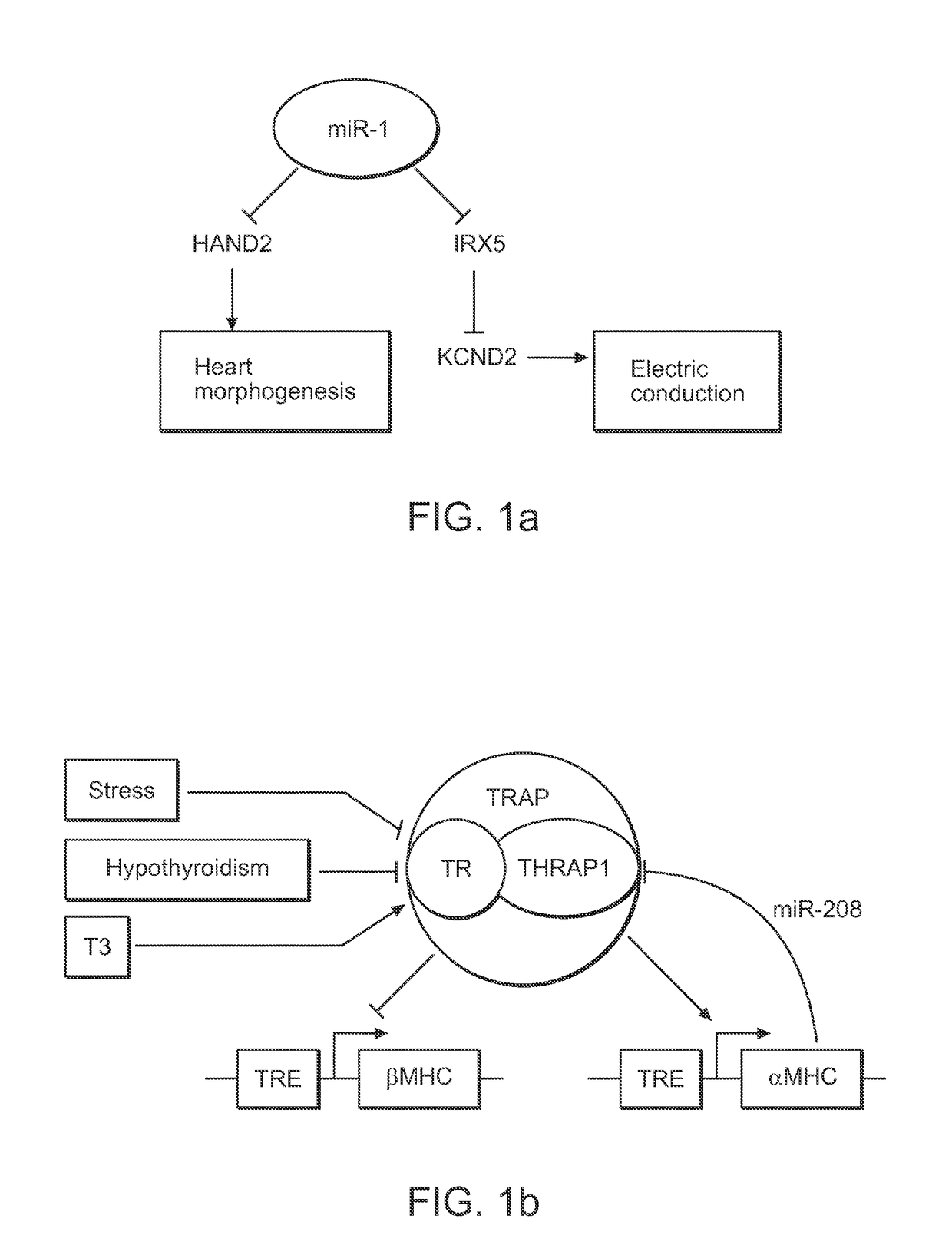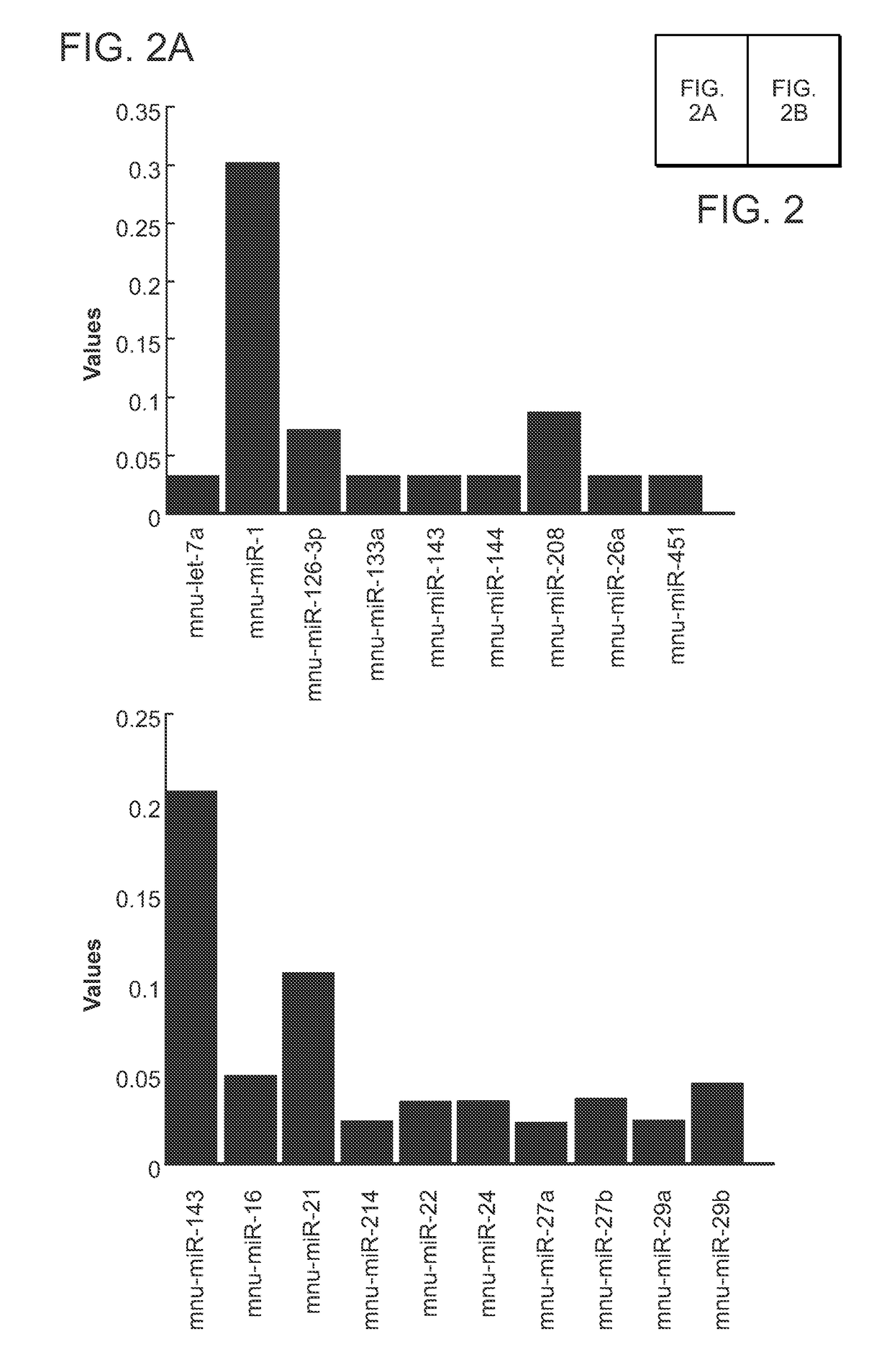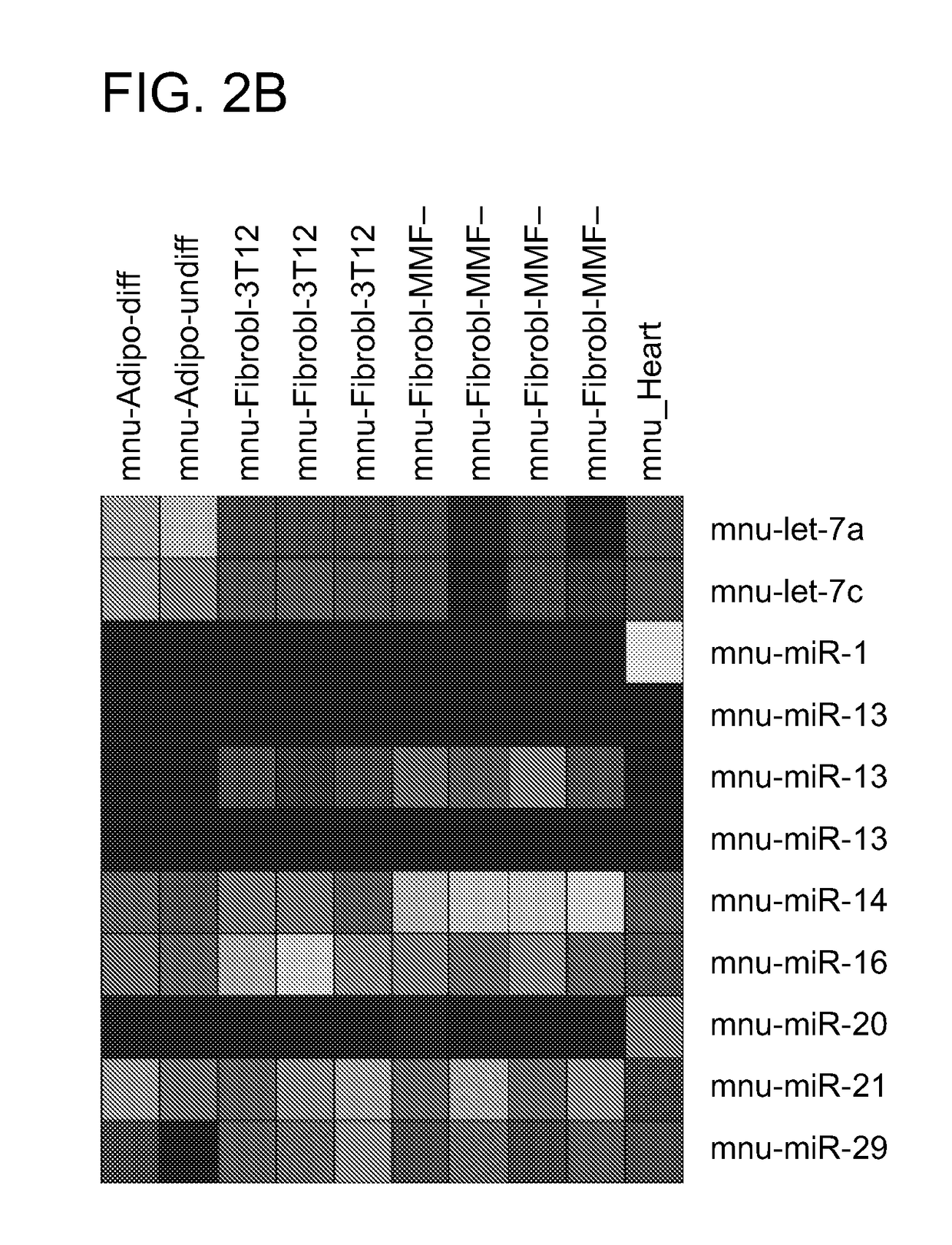Direct reprogramming of cells to cardiac myocyte fate
a technology of myocyte fate and direct reprogramming, which is applied in the field of direct reprogramming of cells to cardiac myocyte fate, can solve the problems of elusive ability to regenerate damaged organs such as the heart, limited capacity of heart tissue regeneration or self-renewal, etc., and achieves the effects of reducing severity and/or frequency of symptoms, eliminating symptoms, and facilitating improvement or remediation of damag
- Summary
- Abstract
- Description
- Claims
- Application Information
AI Technical Summary
Benefits of technology
Problems solved by technology
Method used
Image
Examples
example 1
Reprogramming of Cardiac Fibroblasts
[0065]Mouse cardiac fibroblasts were transfected with specific combinations of distinct microRNAs significant to cardiac and / or muscle tissue. Quantitative real-time PCR (QRT-PCR) and immunocytochemistry (ICC) were employed to assess a switch in gene expression as early as 3 days following transfection. These techniques make use of specific primers (QRT-PCR) and antibodies (ICC) to detect the expression / upregulation of cardiac differentiation markers. Such markers include MADS box transcription enhancer factor 2, polypeptide C (MEF2C), NK2 transcription factor related, locus 5 (NKX2.5), GATA binding protein 4 (GATA4), heart and neural crest derivatives expressed 2 (HAND2), ISL1 transcription factor, LIM homeodomain (ISL1), troponin I type 3 (cardiac) (TNNI3). Sequences provided below.
[0066]The specific combinations of particular microRNAs required to induce cellular reprogramming were initially identified from two screens using all candidate micro...
example 2
Utilization of Specific microRNAs to Direct Reprogramming of Cardiac Fibroblasts to Cardiac Myocytes
[0096]As described in detail below, because of their plasticity and presumed higher propensity for cell conversion, neonatal cardiac fibroblasts were reprogrammed into cardiac myocytes. Immunostaining methods were used to further investigate whether the microRNA-transfected cell populations express markers that are characteristic of cardiomyocytes. The organization of the expression of these proteins was also determined.
[0097]The results presented in FIG. 7 show examples of cardiac markers that are “turned on” in microRNA-transfected neonatal cardiac fibroblasts two weeks post-transfection. As shown in FIG. 7, cardiac fibroblasts were immunostained two weeks after transfection with a combination of miR1, miR133, and miR206. The nucleus of cells was stained blue with 4′,6-diamidino-2-phenylindole (DAPI). Cells that have been fibroblasts at some point in their lifetime were stained red ...
example 3
Reprogramming of Cardiac Fibroblasts into Cardiac Myocytes In Vivo
[0106]The microRNAs or microRNA combinations described herein were delivered (in lentiviral form) into a transgenic mouse model to determine whether the microRNAs convert cardiac fibroblasts into cardiac myocytes in vivo.
[0107]MicroRNA-expressing lentivirus constructs were purchased from Thermo Scientific (formerly Open Biosystems) in purified form. The following miRIDIAN shMIMIC microRNAs (followed by the catalog #) were used:[0108]1. Non-silencing control—HMR5872[0109]2. miR-499-5p—VSH5841-101207453[0110]3. miR-133a—VSH5841-101208056[0111]4. miR1—VSH5841-101208392[0112]5. miR208a—VSH5841-101207644
[0113]MicroRNA / miRNA oligonucleotides or a combination of microRNA oligonucleotides are optionally delivered utilizing a lentivirus. In addition to Thermo Scientific, microRNA delivery systems are available from other suppliers such as BioSettia (San Diego, Calif. USA). For example, human microRNA (hsa-miRNA) precursors and...
PUM
| Property | Measurement | Unit |
|---|---|---|
| mass | aaaaa | aaaaa |
| molecular mass | aaaaa | aaaaa |
| molecular mass | aaaaa | aaaaa |
Abstract
Description
Claims
Application Information
 Login to View More
Login to View More - R&D
- Intellectual Property
- Life Sciences
- Materials
- Tech Scout
- Unparalleled Data Quality
- Higher Quality Content
- 60% Fewer Hallucinations
Browse by: Latest US Patents, China's latest patents, Technical Efficacy Thesaurus, Application Domain, Technology Topic, Popular Technical Reports.
© 2025 PatSnap. All rights reserved.Legal|Privacy policy|Modern Slavery Act Transparency Statement|Sitemap|About US| Contact US: help@patsnap.com



